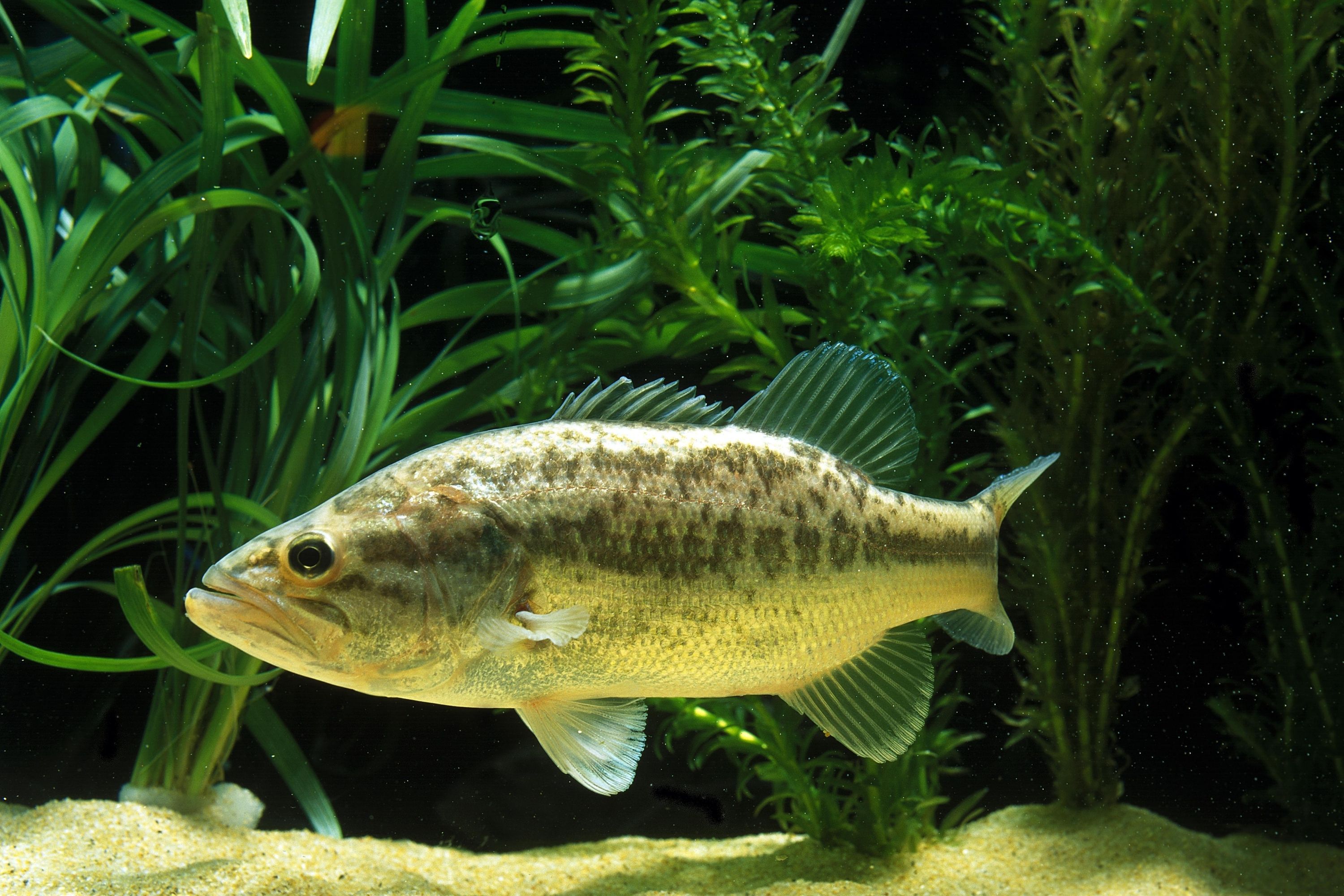Smallmouth bass
(Micropterus dolomieu)

Description
The smallmouth bass (Micropterus dolomieu) is a species of freshwater fish in the sunfish family (Centrarchidae) of the order Perciformes. It is the type species of its genus. One of the black basses, it is a popular game fish sought by anglers throughout the temperate zones of North America, and has been spread by stocking as well as illegal introductions to many cool-water tributaries and lakes in Canada and more so introduced in the United States. The maximum recorded size is approximately 27 inches and 12 pounds. The smallmouth bass is native to the upper and middle Mississippi River basin, the Saint Lawrence River Great Lakes system, and up into the Hudson Bay basin. The world record size was 11 lbs and 15 ounces caught in the reservoir Dale Hollow, on the Kentucky Tennessee border. Its common names include smallmouth, bronzeback, brown bass, brownie, smallie, bronze bass, and bareback bass. Smallmouth have a slender but muscular fusiform body shape making them very powerful swimmers. The coloration of the smallmouth bass' ctenoid scales range from golden-olive to dark brown dorsally which fades to a yellowish white ventrally with dark brown vertical bars or blotches along the body and dark brown horizontal bars on the head. The combination of the muscular fusiform body shape and camouflage like coloring make these fish highly effective ambush predators. The coloration can vary greatly depending on the fishes age, habitat, water quality, diet, and the spawning cycle. Generally, the protruding jaw of the smallmouth doesn't extend past the eyes which are red or brown. They have two dorsal fins which are separated by a shallow interdorsal notch. The front dorsal has 9-11 spiney rays and the back dorsal has 13-15 soft rays. Males are generally smaller than females. The males tend to range around two pounds, while females can range from three to six pounds. Their average sizes and coloration can differ, depending on if they are found in lacustrine or riverine habitats. Smallmouth found in riverine habitats are generally long and slender which allows greater agility in moving water, while those found in lacustrine habitats and shorter and deeper bodied. Riverine smallmouth that live in dark water tend to be rather torpedo-shaped and very dark brown to be more efficient for feeding. Lacustrine smallmouth bass, however, that live in sandy areas, tend to be a light yellow-brown and are more oval-shaped.
Taxonomic tree:







